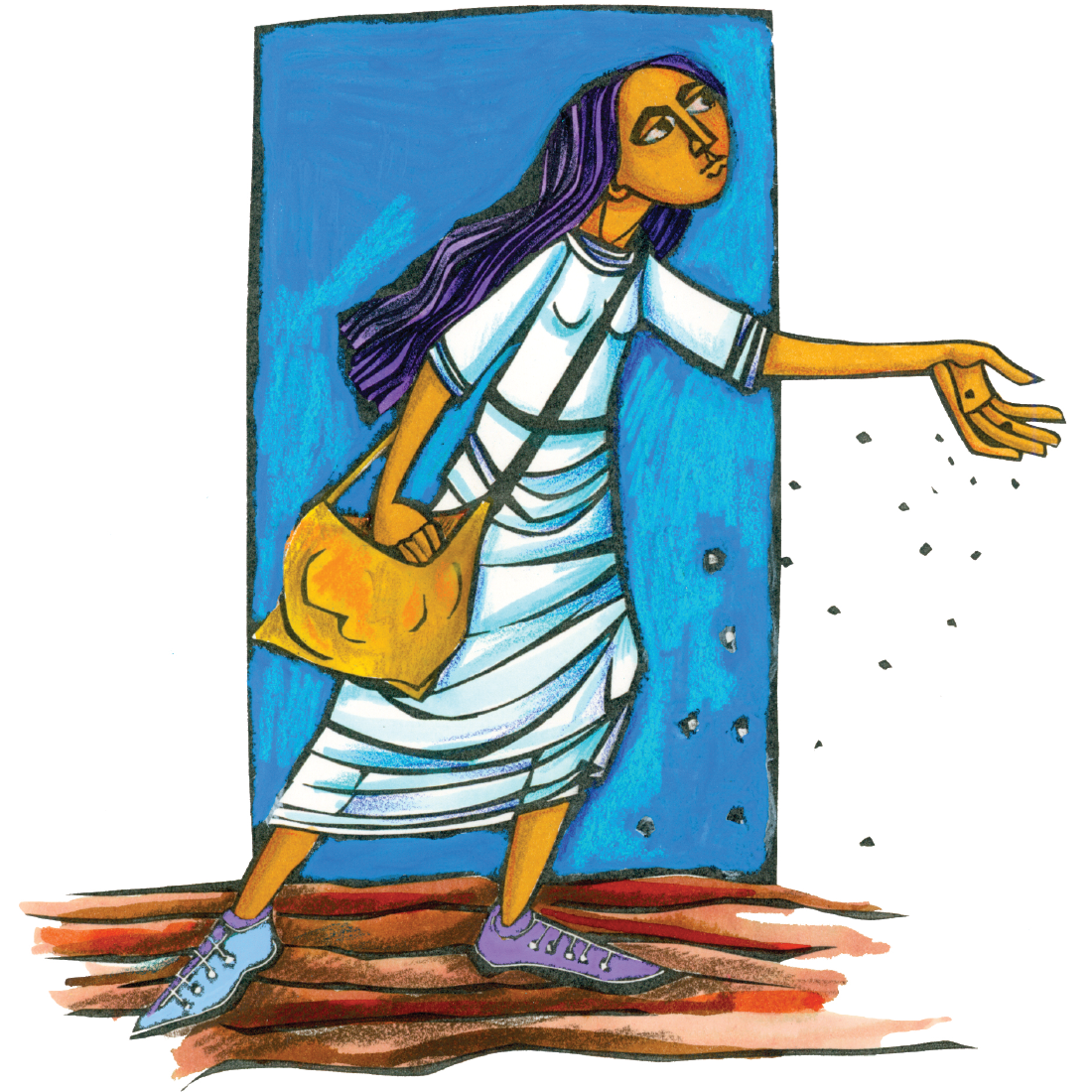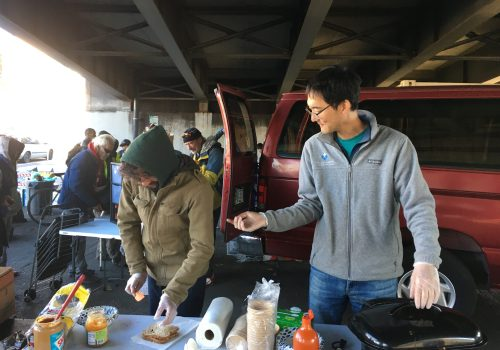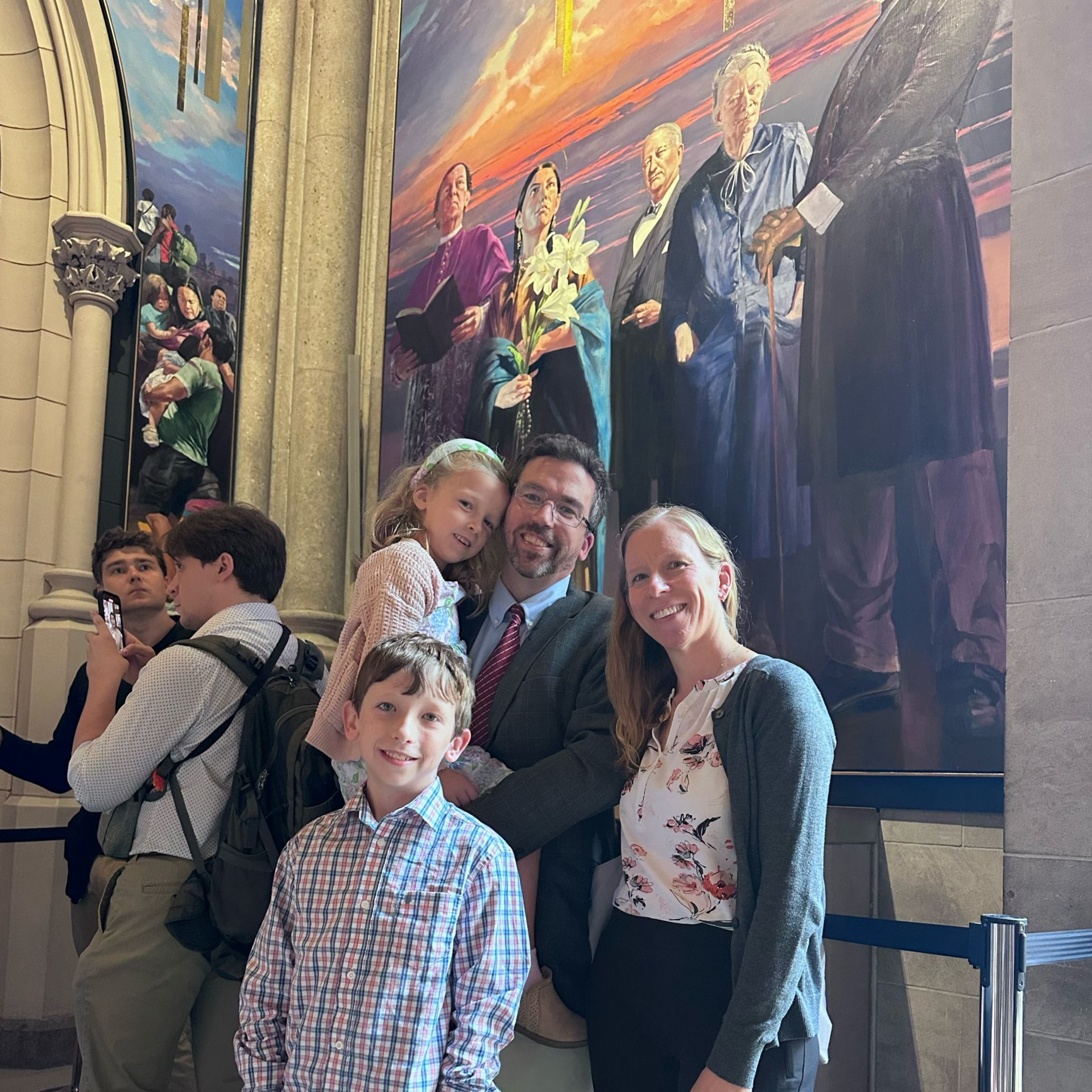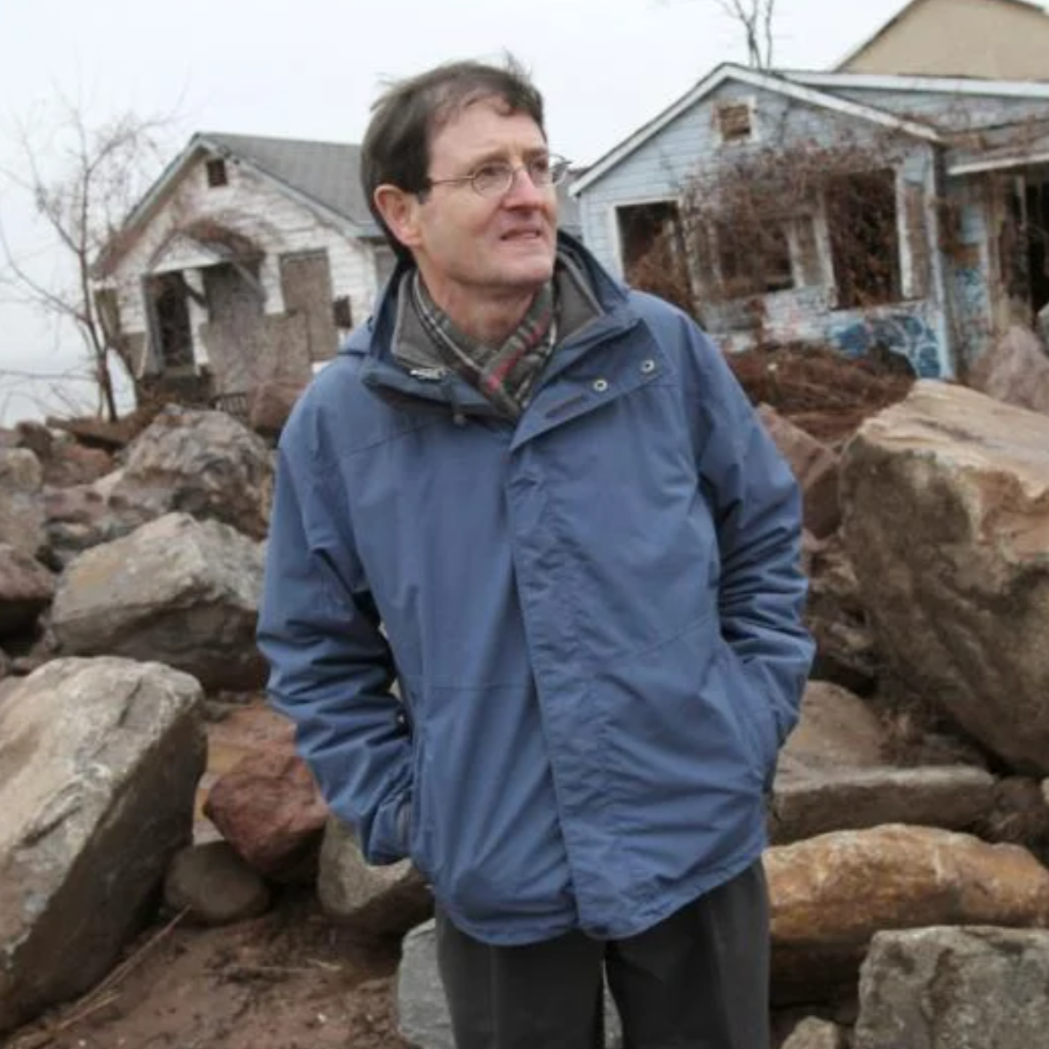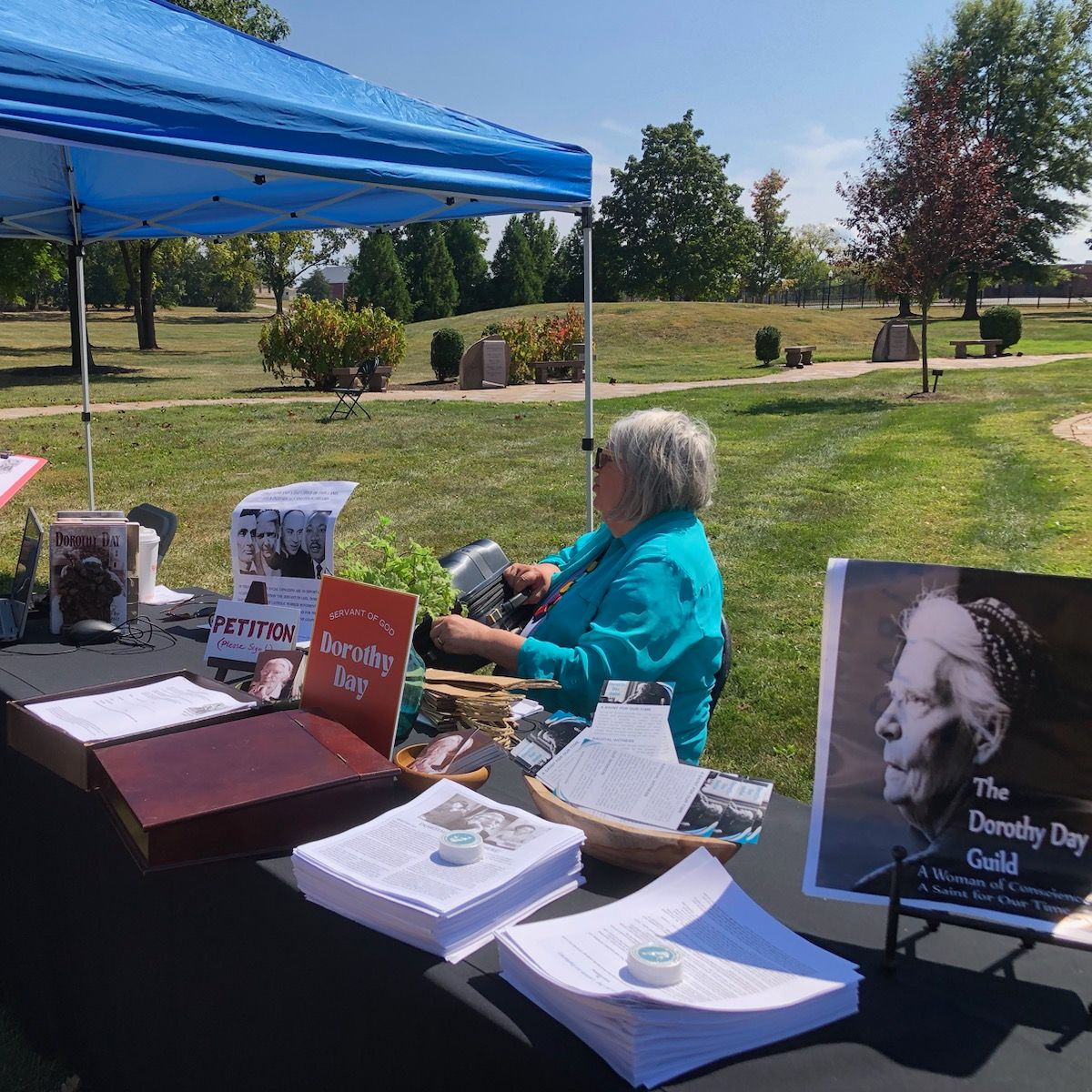What he meant, I believe, is that although we may not have the solution to the housing crisis, U.S. warmongering, or state violence, this, at least, was a way of pointing toward a hopeful, human way of living.
What I learned that summer was that in a world where people are discarded and told they do not matter, to create community around a delicious, nutritious meal is hopeful; that in a war-addicted world, to vigil for peace is human; in a culture where shallow entertainment lulls us into unthinking acquiescence, to engage in “clarification of thought” is prophetic.
“The rhythm I learned at the LACW—chop, cook, serve, then walk, pray, protest—seemed right to me, not because it solved hunger or ended wars, but because it kept me human in the face of the absurdly inhumane. It was, indeed, hopeful.”
I was going through a career transition when I signed up for the internship program. I had taught Ethics and Social Justice at an all-boys Catholic high school in San Jose, California
for seven years. It was a meaningful and fulfilling time. Yet, inexplicably, I felt drawn to something else though I did not quite know what yet.
I spent three months
visiting various Catholic Worker communities in California, including Guadalupe, San Jose, Redwood, Half Moon Bay, and San Francisco before arriving in Los Angeles. My intention was to learn what I could from the Catholic Worker movement before transitioning to whatever my next career might be.
It was during one of our silent anti-war vigils around the federal building in downtown Los Angeles when I realized I did not want to “transition” to something else. It was 2011, and the United States was mired in long, bloody wars in Afghanistan and Iraq. Yet, by then, most people I knew had stopped thinking about the wars despite their enormous human and ecological costs.
The millions who had taken to the streets in early 2003 to protest the imminent invasion of Iraq were now mostly silent. Apart from those with loved ones fighting in Afghanistan or Iraq, the Catholic Worker community was the only group of people I
had met who still thought daily about these wars.
I do not write this in judgment, and I include myself among those who were only vaguely aware of the reality of the wars being waged abroad. Even when I was teaching war and peace, most days I did not think, let alone pray, about the wars, preoccupied as I was with grading, lesson planning, and other tasks of work and daily life.
That day in front of the federal building, I was struck by how important it was that here, at least, was a group of people who chose to remember. Whatever one thought of the merits of the wars in Afghanistan and Iraq, if our government was killing others in our name, was it not our duty to at least remember?
In the Eucharistic liturgy,
the presider repeats the words of Jesus at the Last Supper: “This is my body broken for you; this is my blood poured out for you. Do this in remembrance of me.” If we are called to remember the body and blood of Jesus in the bread and wine at Mass, how much more are we tasked with remembering him in people whose actual flesh is broken, and whose life-sustaining blood is spilt by our hands?
The rhythm I learned at the Los Angeles Catholic Worker—chop, cook, serve, then walk, pray, protest—seemed right to me, not because it solved hunger or ended wars, but because it kept me human in the face of the absurdly inhumane. It was, indeed, hopeful.
In Japan, where I grew up, twelve years represents a full cycle of the zodiac calendar.
With each “round” or “turn” of the zodiac cycle, we enter a new fullness of life. This year of the rabbit, twelve years after my first experiment with the Catholic Worker, I find myself in Portland, Oregon, at the newly formed Dandelion House Catholic Worker.
I chose the name Dandelion House for the beautiful yellow flower that most of us think of as a weed. This plant is resilient, like the people relegated to the margins in Portland with whom we work. The entire plant—from flower, to leaves, to roots—can be taken as food and medicine, as I learned from a dear one versed in herbal medicine. And, of course, we wish upon dandelion seeds, entrusting them with our dreams. It is a flower of hope.
At this budding Catholic Worker, we house individuals and families in need, one, two, or three at a time. Our first guests are two incredibly strong young people fighting for their lives against trauma and addiction. We do our best to offer emotional and physical safety, spiritual grounding, and love. Once a week we offer a hot, nutritious meal to the local community that gathers under one of Portland’s many bridges. We pray. Little by little we experiment with what our own liturgy of hope looks like. What does hope look like today, in the heart of an empire that spends more than 800 billion dollars a year on war and preparations for war, instead of on protecting forests, restoring watersheds, or caring for the least among us? We don’t fully know, but we are trying to figure it out.
-
Our deep thanks to
Bro. Martin Erspamer, OSB, for the use of his iconic images (preceding columns for “Good Talk,” “Breaking Bread,” “Sowing Seeds,” “Signs of Holiness”)
-



